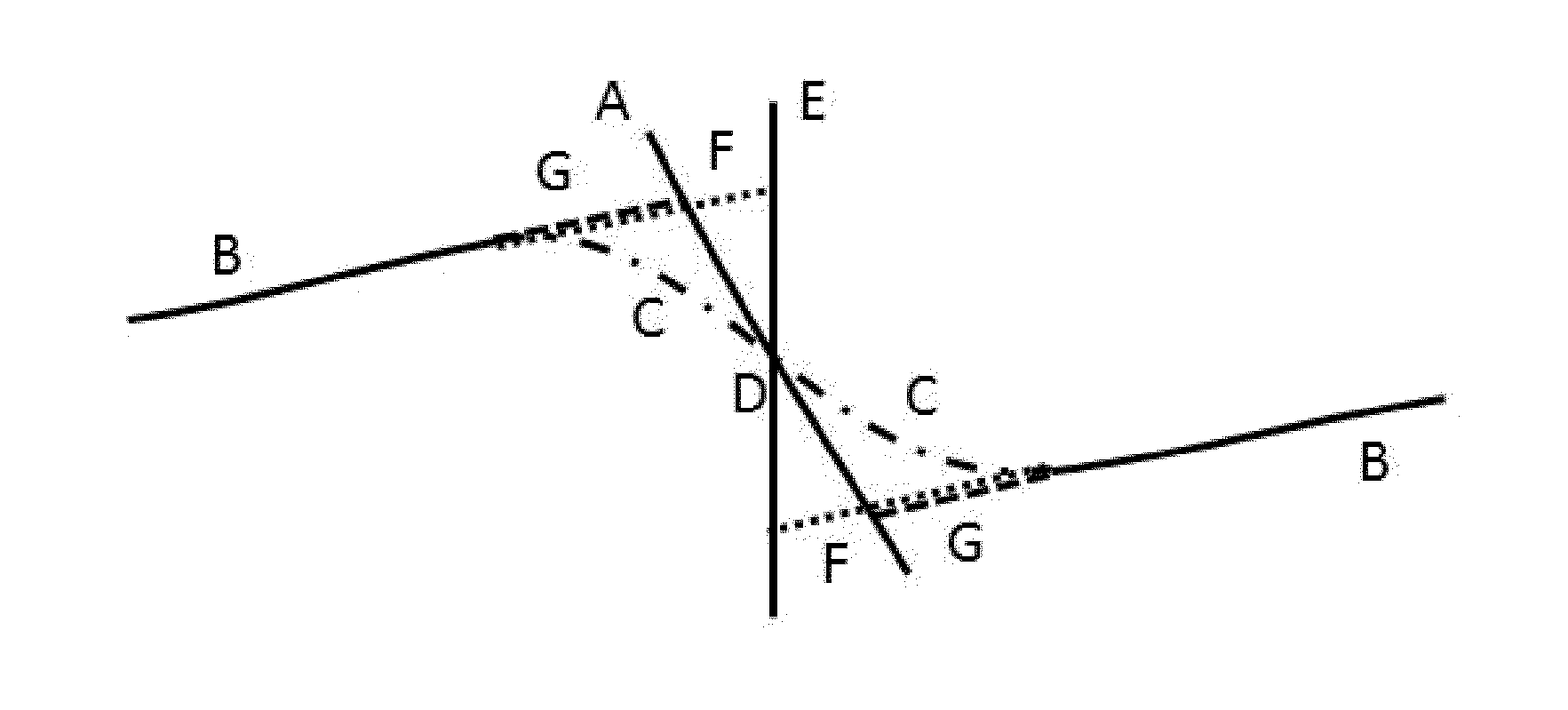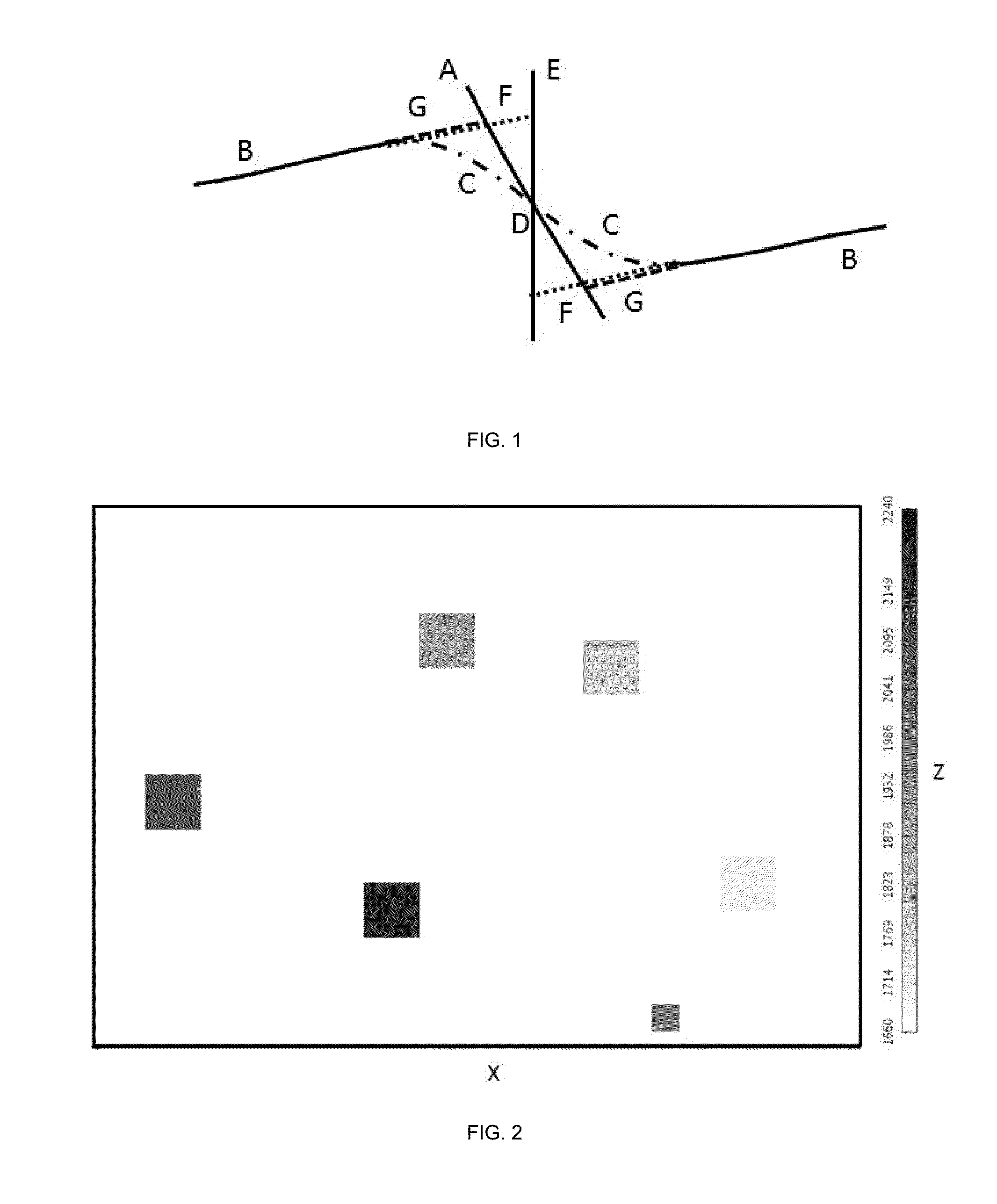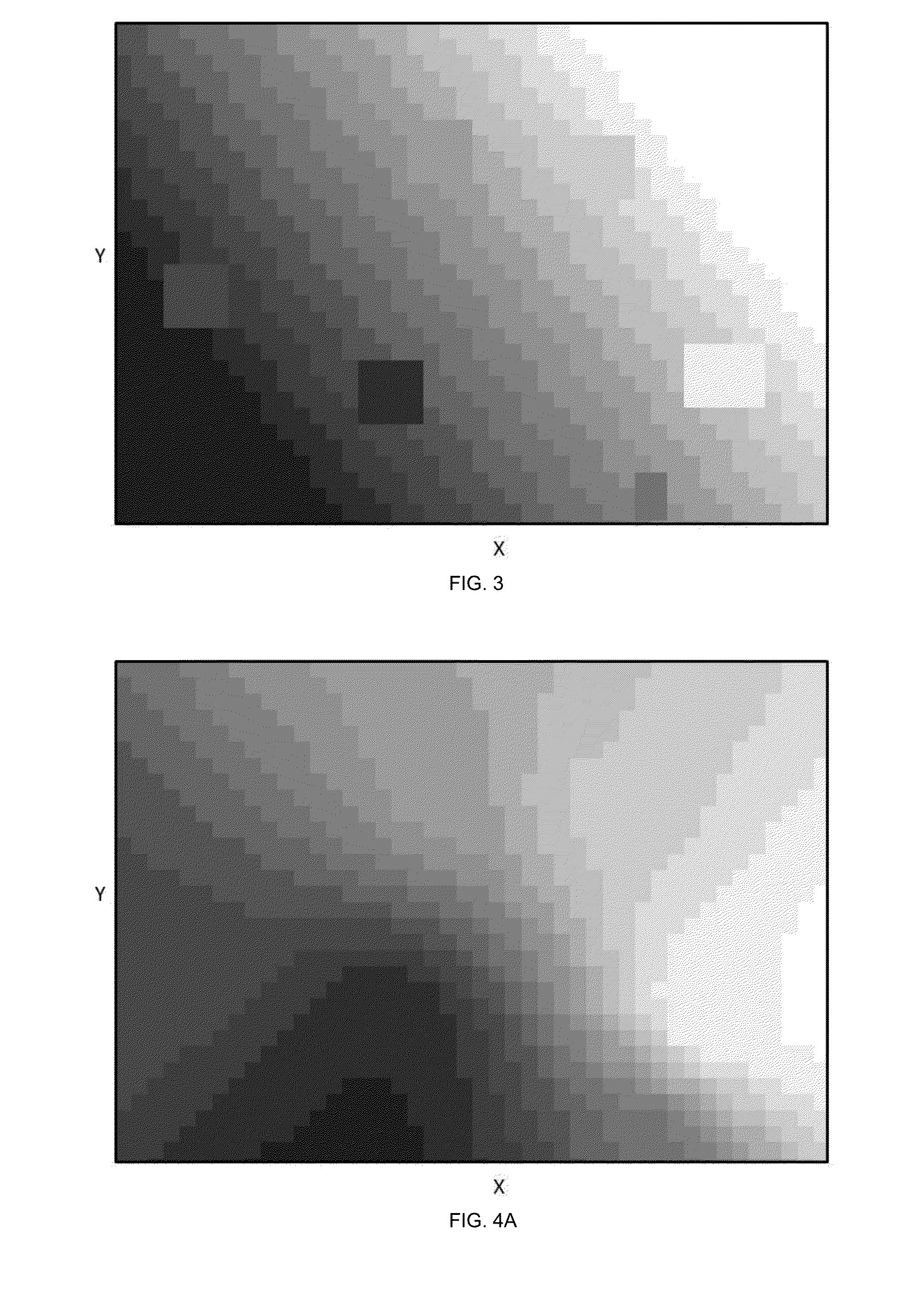Method of constructing a geological model
a geological model and model technology, applied in the field of oil exploration, can solve the problems of inability to continuously represent the results, and the calculation time of conjugate gradients is very expensiv
- Summary
- Abstract
- Description
- Claims
- Application Information
AI Technical Summary
Benefits of technology
Problems solved by technology
Method used
Image
Examples
examples of application
[0122]The characteristics and advantages of the method according to the invention will be more clearly apparent on reading the examples of application hereinafter.
example 1
Case Without Faults
[0123]In this example, a subterranean formation exhibiting a single boundary of beds is considered. Sparse measurements of the geometry of this boundary of beds are available on a fine grid G0 formed of 500 by 700 mesh cells, i.e. a number N0 of mesh cells of 350 000. For this illustrative example, a number of empty mesh cells N″0 of 340 000 will be considered. In order to complete the empty mesh cells of the grid of interest, one chooses to solve, by the conjugate gradient procedure, an inverse problem, such as described in the previous step 1.3.2), based on the minimization of the second derivatives.
[0124]FIG. 2 shows, by squares hatched to greater or lesser extent, the N′0 measurements of the geometry of the considered boundary of beds which are carried out on the fine grid G0. It may thus be observed that the 10 000 measurements of the geometry have been carried out in six very distinct zones and that the measured depth varies between 1700 and 2200 m.
[0125]In ...
example 2
Case with Faults
[0131]Through this example, we propose to determine the geometry of the same boundary of beds as that described in the previous example, but in the case where five faults are present.
[0132]FIG. 7 presents the location of the N′0 measurements (hatched squares) with respect to the five fault planes in question (curved lines). FIG. 8 presents the result of the method according to the invention applied with the same characteristics as in the previous example, but taking the faults into account, as is described in a variant of the method according to the invention. In particular, a step of adaptation to the case of the faults of the step described in section 1.3.1 of initialization of each inverse problem has been implemented. It may thus be noted in this Figure that the method according to the invention makes it possible to take account of the location of the faults, by interrupting the process of interpolation / extrapolation of a boundary of beds at the level of the faul...
PUM
 Login to View More
Login to View More Abstract
Description
Claims
Application Information
 Login to View More
Login to View More - R&D
- Intellectual Property
- Life Sciences
- Materials
- Tech Scout
- Unparalleled Data Quality
- Higher Quality Content
- 60% Fewer Hallucinations
Browse by: Latest US Patents, China's latest patents, Technical Efficacy Thesaurus, Application Domain, Technology Topic, Popular Technical Reports.
© 2025 PatSnap. All rights reserved.Legal|Privacy policy|Modern Slavery Act Transparency Statement|Sitemap|About US| Contact US: help@patsnap.com



